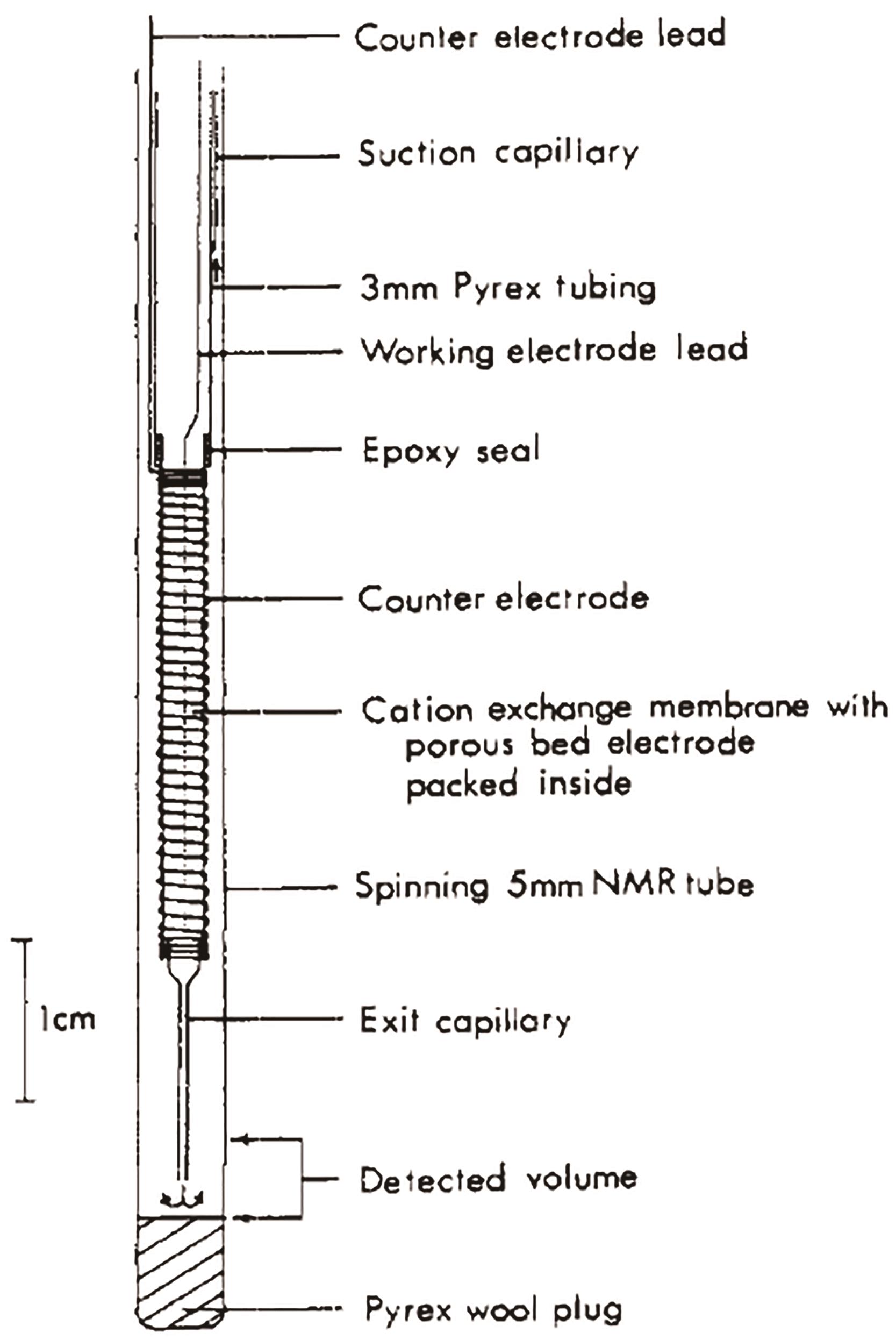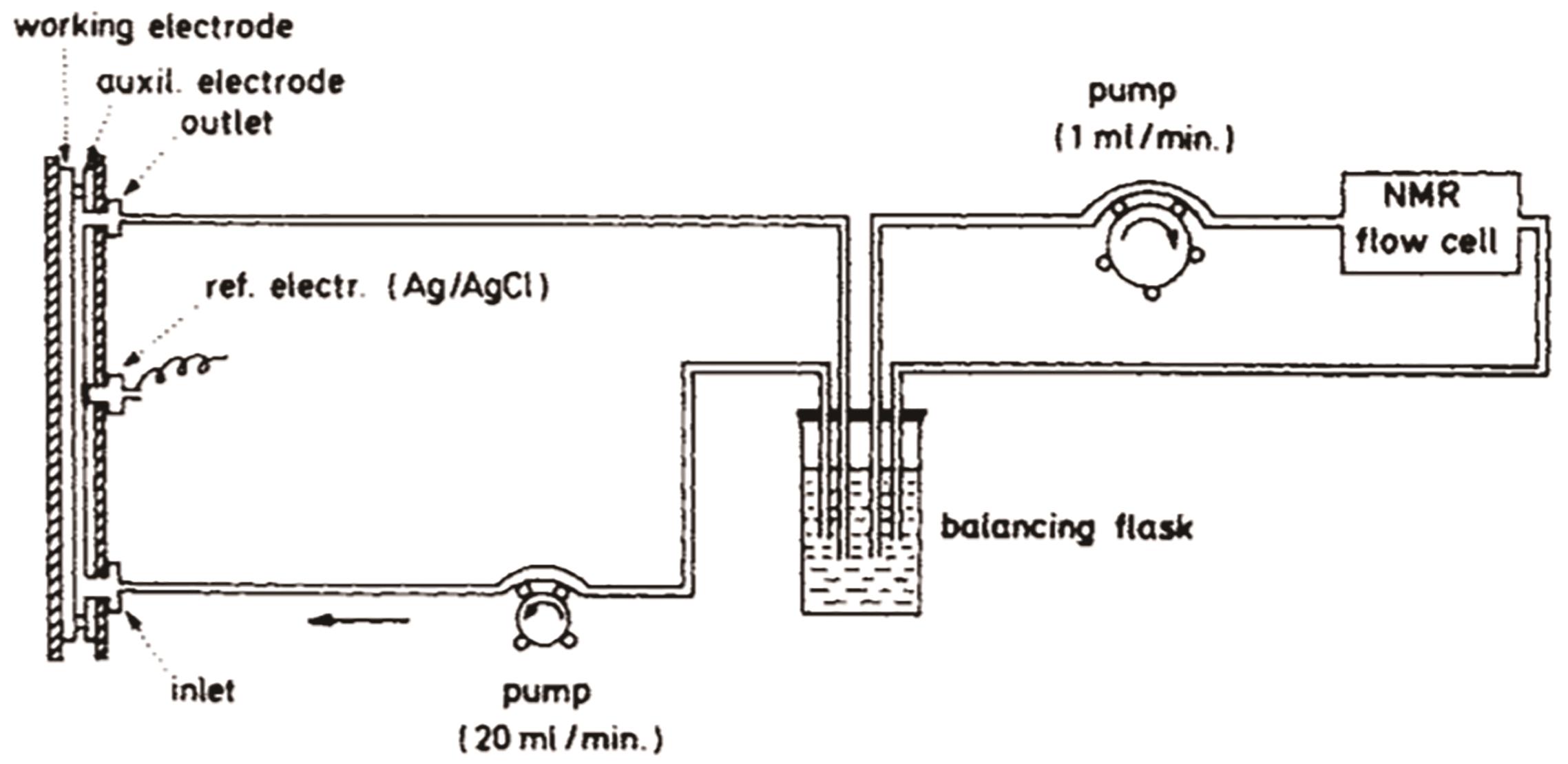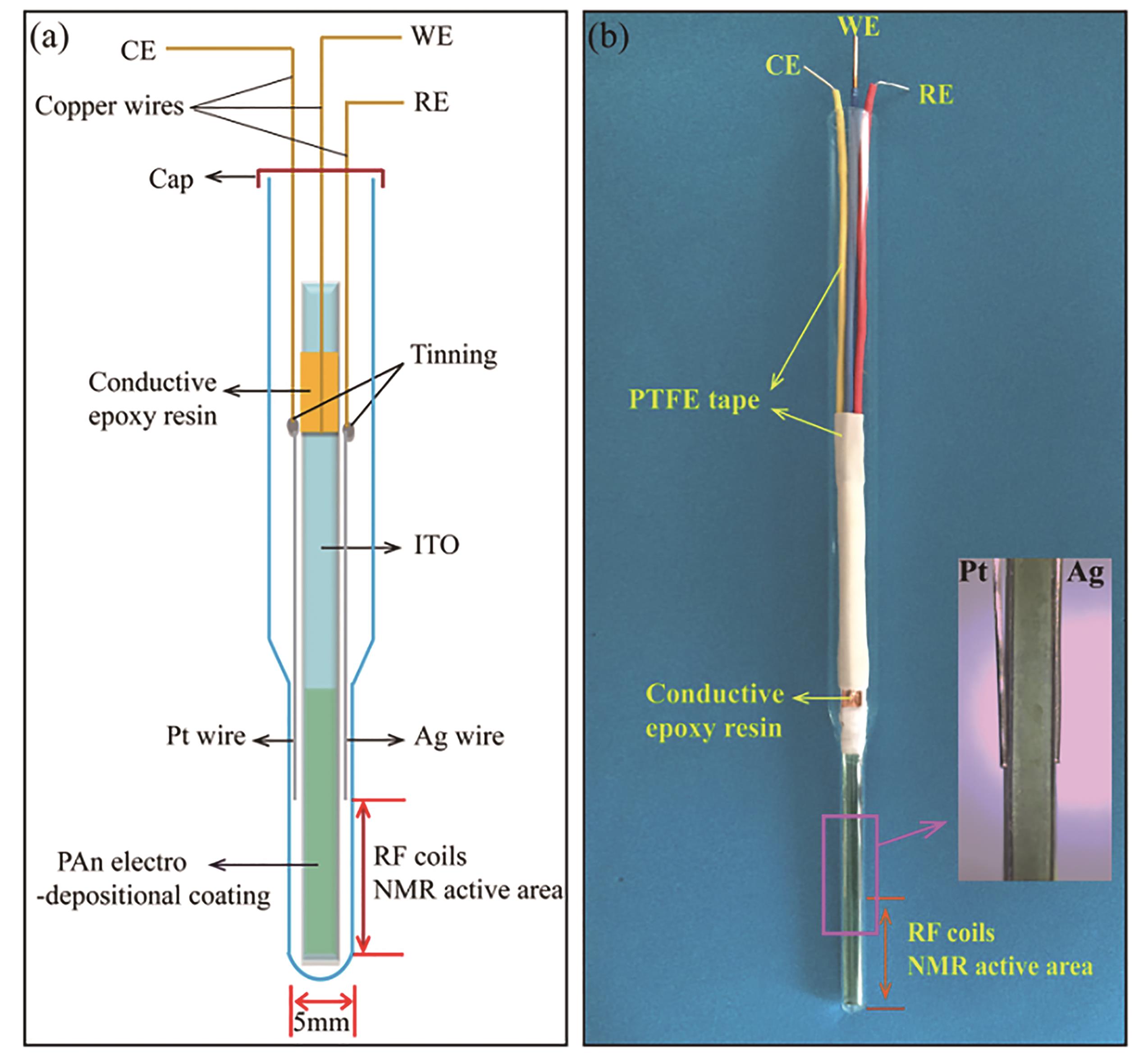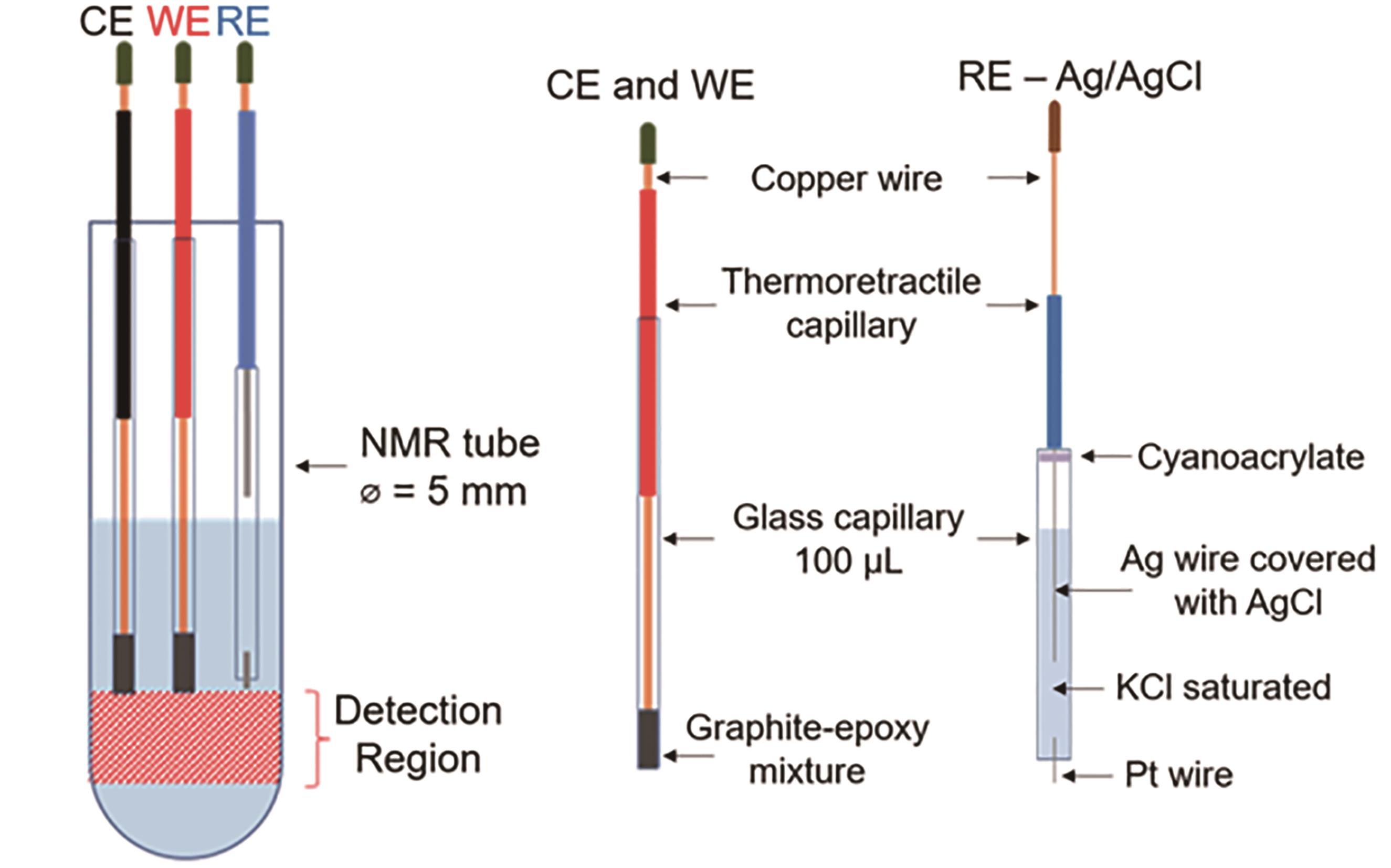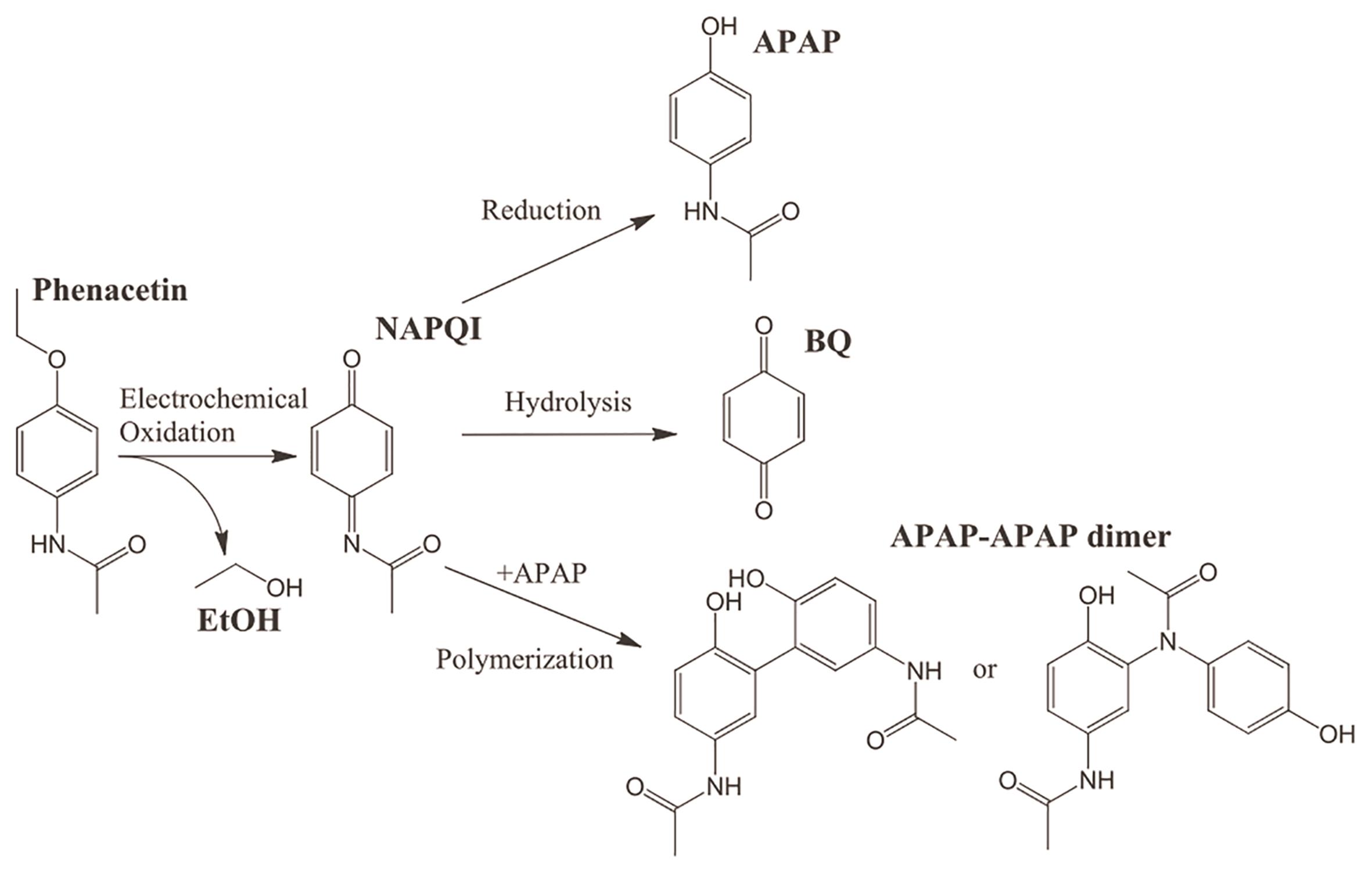
Chinese Journal of Applied Chemistry ›› 2023, Vol. 40 ›› Issue (3): 317-328.DOI: 10.19894/j.issn.1000-0518.220184
• Review • Previous Articles Next Articles
A New Hyphenated Technique of in Situ Electrochemical NMR and the Application Progress
Xiao-Ping ZHANG( ), Si-Yue ZHANG, Ming-Chang WANG, Yu-Tong ZHANG, Sha-Lin MIAO, Yu WANG, Wei SUN(
), Si-Yue ZHANG, Ming-Chang WANG, Yu-Tong ZHANG, Sha-Lin MIAO, Yu WANG, Wei SUN( )
)
- College of Chemistry and Chemical Engineering,Key Lab of Functional Materials and Photoelectrochemistry of Haikou,Hainan Normal University,Haikou 571158,China
-
Received:2022-05-18Accepted:2022-10-12Published:2023-03-01Online:2023-03-27 -
Contact:Xiao-Ping ZHANG,Wei SUN -
About author:swyy26@hotmail.com
25478885@qq.com;
-
Supported by:the National Natural Science Foundation of China Youth Science Foundation Project(22102043);Hainan Provincial Natural Science Foundation of High Level-talent Project(220RC594)
CLC Number:
Cite this article
Xiao-Ping ZHANG, Si-Yue ZHANG, Ming-Chang WANG, Yu-Tong ZHANG, Sha-Lin MIAO, Yu WANG, Wei SUN. A New Hyphenated Technique of in Situ Electrochemical NMR and the Application Progress[J]. Chinese Journal of Applied Chemistry, 2023, 40(3): 317-328.
share this article
Add to citation manager EndNote|Ris|BibTeX
URL: http://yyhx.ciac.jl.cn/EN/10.19894/j.issn.1000-0518.220184
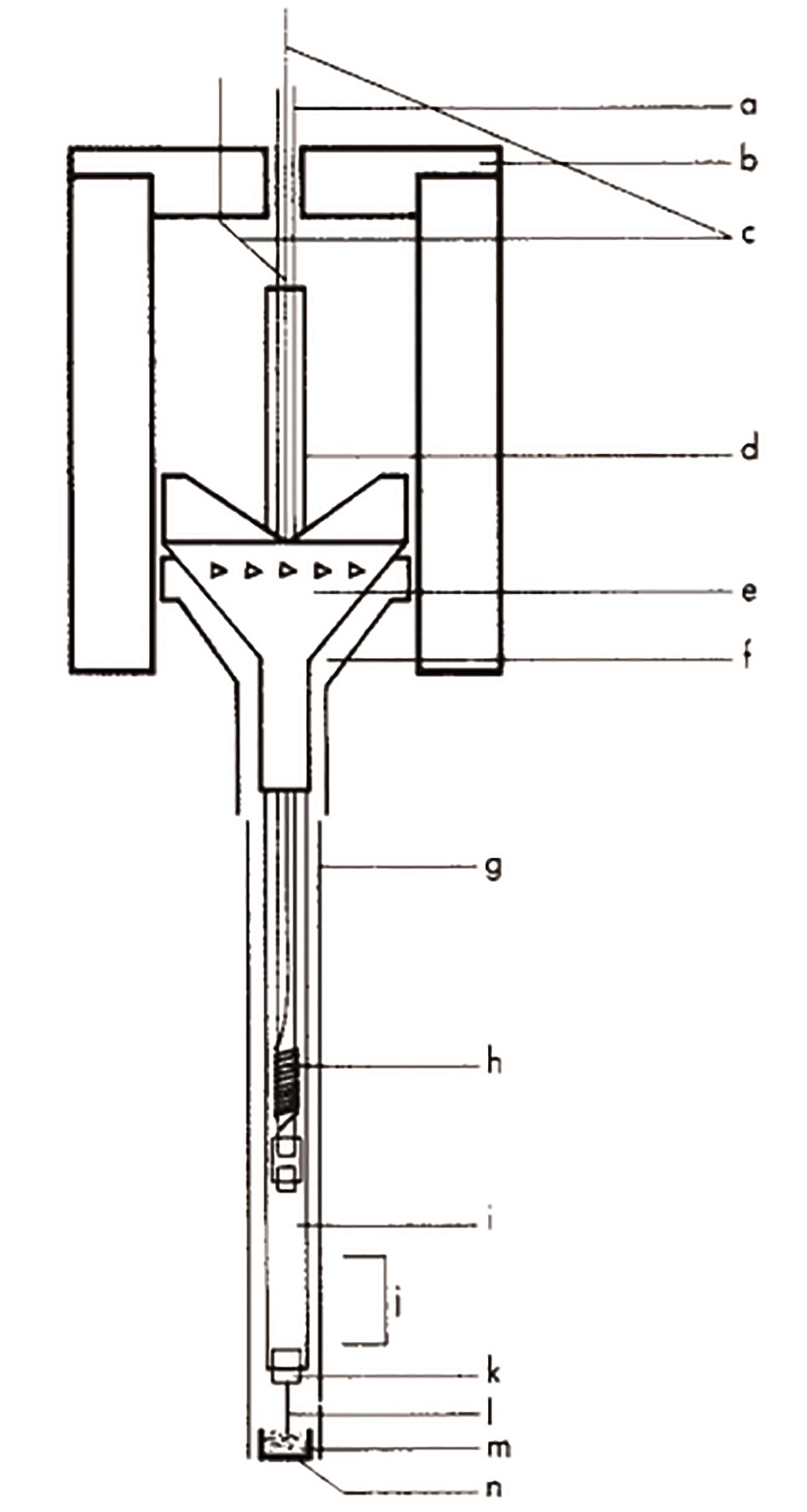
Fig.4 Electrochemical cell inside Varian A-60 probe assembly[11]Note: a.l.8-mm capillary tube; b.Plexlglas cap; c.copper wire leads; d.5-mm NMR tube; e.NMR spinner turbine; f.NMR spinner assembly; g. glass NMR probe tube; h.reference and auxiliary electrode assembly; i.Sb-SnO2 film; j.detector coil length; k.graphite plug; I.narrow graphite rod; m.mercury pool; n.graphite cup
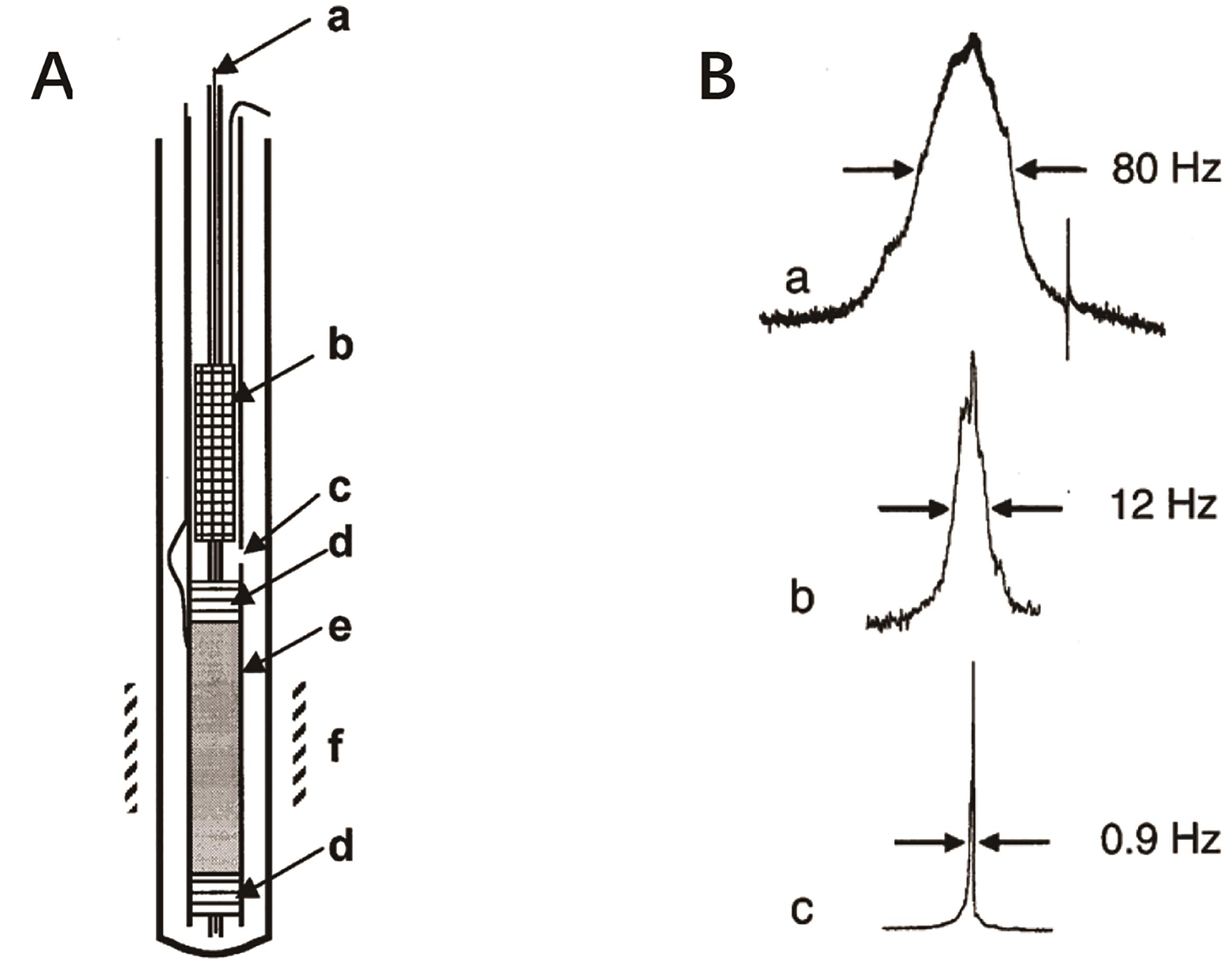
Fig.5 (A) Coaxial three-electrode assembly inserted in normal 10-mm NMR sample tube; (B) Effects of the intruding WE on the lineshape of a high-field 1H NMR signal for HOD at 300 MHz[12]Note: A: a.Reference electrode capillary (emerging below working electrode, WE); b.cylindrical Pt-mesh counter electrode (CE); c.pinholes (=4) connecting CE/WE compartments; d.Teflon plugs; e.tubular WE (Au film on glass); f.receiver coils. B: a.spiral Pt wire; b. cylindrical Pt mesh; c.thin Au film
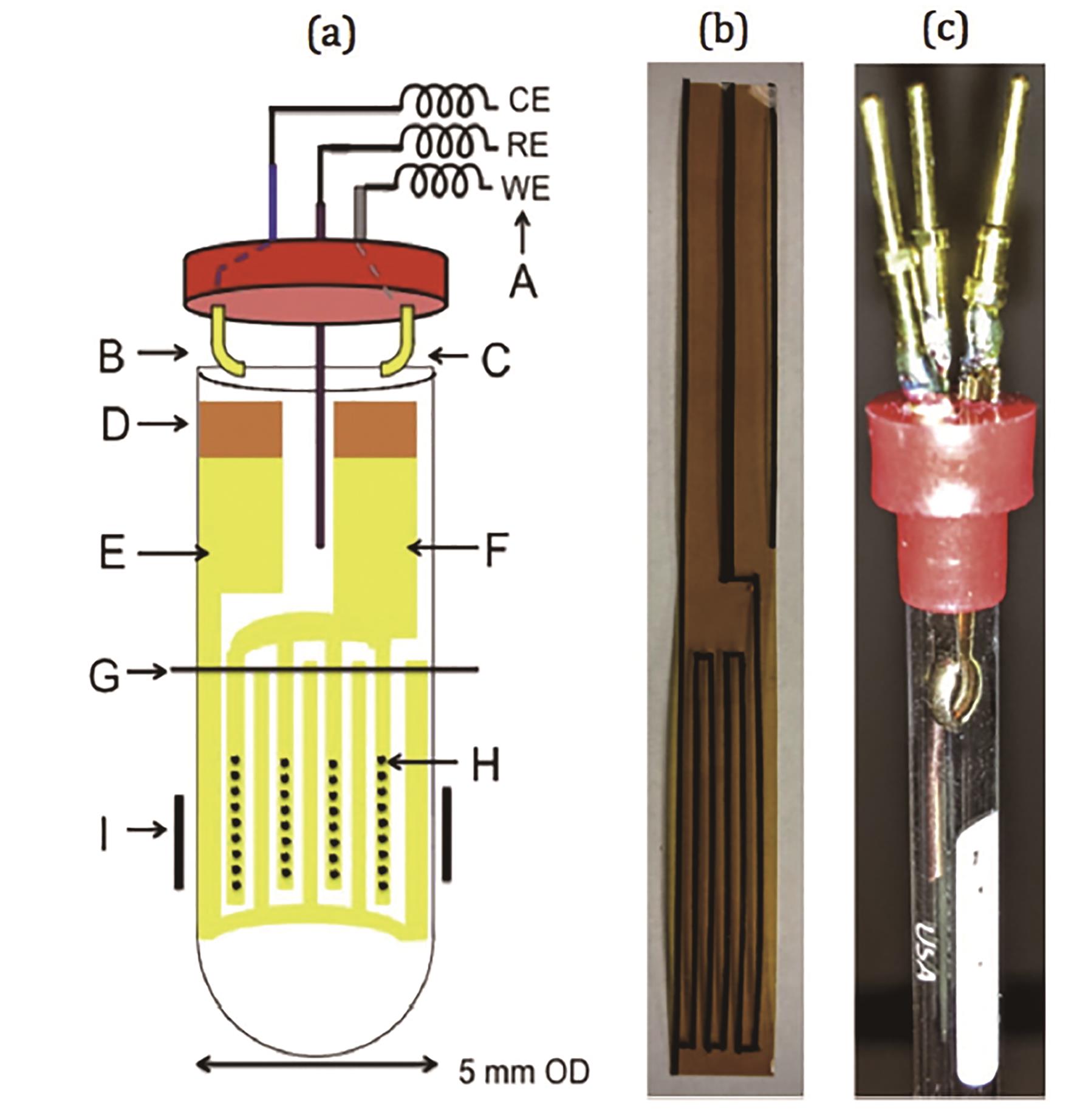
Fig.6 (a) Schematic of the interdigitated gold electrode EC-NMR system setup. The system can be incorporated into a 5-mm commercial NMR tube and thus used in standard high-resolution solution NMR probes. The components are: A. 200 μh inductors as RF chokes, B. Counter electrode electrical finger, C. Working electrode electrical finger, D. Copper tape, E. Counter electrode interdigitated electrode, F. Working electrode interdigitated electrode, G. electrolyte level in NMR tube, H. catalyst, and I.NMR coil. (b) The polyimide (Kapton) strip shown before the mask is removed to reveal the interdigitated gold electrodes. (c) The NMR cap in place on an empty NMR tube. The electrodes in (b) will be rolled lengthwise into a cylinder and inserted into the NMR tube for an experiment[14]

Fig.8 (a) Huang′s schematic of the EC-NMR cell adapted from Dunsch et al.′s work; (b) Normal (blue) and ethanol oxidation reaction (EOR) (red) CVs on the activated Pt black; (c) Normal (blue) and EOR (red) CVs on the activated PtRu black[18]
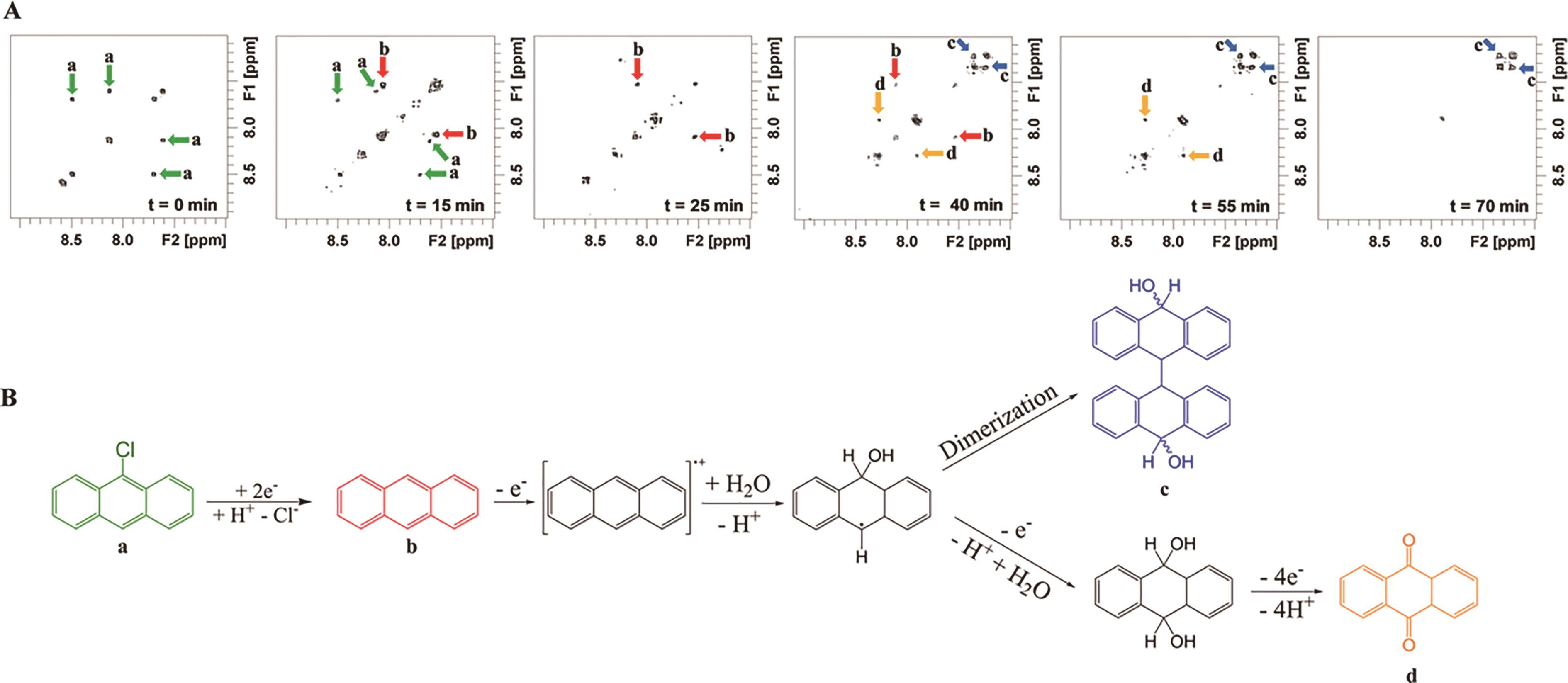
Fig.11 (A) Real-time 2D COSY NMR spectra recorded in situ during the electrochemical reduction of 9-chloroanthracene; (B) Redox behavior of 9-chloroanthracene based on these spectra[26]
| 1 | ZHAO M L, TANG X H, ZHUANG H H, et al. Characterization of complicated electropolymerization using UV-Vis spectroelectrochemistry and an electrochemical quartz-crystal microbalance with dissipation: a case study of tricarbazole derivatives[J]. Electrochem Commun, 2021, 123: 106913. |
| 2 | 孙世刚. 固/液界面现场光谱电化学[J]. 大学化学, 1993, 8(6): 1-4. |
| SUN S G. In situ spectroelectrochemistry at solid/liquid interface[J]. Univ Chem, 1993, 8(6): 1-4. | |
| 3 | SUN S G, CHRISTENSEN P A, WIECKOWSHI A, et al. In-situ spectroscopic studies of adsorption at the electrode and electrocatalysis[M]. UK: The Science Publishing Company, 2008: 139. |
| 4 | BARD A J, FAULKNER L R. Electrochemical methods: fundamentals and applications[M]. 2nd Edition,New York: John Wiley & Sons, Inc. 2001: 669. |
| 5 | RAPTA P, HAUBNER K, MACHATA P, et al. Charged states in diphenylamino endcapped thiophenes with a 1,4-phenylene core: in situ electron spin resonance/ultraviolet-visible-near infrared and nuclear magnetic resonance spectroelectrochemistry and quantum chemical study[J]. Electrochim Acta, 2013, 110: 670-680. |
| 6 | SIMON H, MELLES D, JACQUOILLEOT S S, et al. Combination of electrochemistry and nuclear magnetic resonance spectroscopy for metabolism studies[J]. Anal Chem, 2012, 84: 8777-8782. |
| 7 | DRAGANCEA D, TALMACI N, SHOVA S, et al. Vanadium(V) complexes with substituted 1,5-bis(2-hydroxybenzaldehyde) carbohydrazones and their use as catalyst precursors in oxidation of cyclohexane[J]. Inorg Chem, 2016, 55: 9187-9203. |
| 8 | UGO B, MOHAMMED B. Review of advances in coupling electrochemistry and liquid state NMR[J]. Talanta, 2015, 136: 155-160. |
| 9 | RICHARDS J A, EVANS D H. Flow cell for electrolysis within the probe of a nuclear magnetic resonance spectrometer[J]. Anal Chem, 1975, 47: 964-966. |
| 10 | ALBERT K, DREHER E L, STRAUB H, et al. Monitoring electrochemical reactions by 13C NMR spectroscopy[J]. Magn Reson Chem, 1987, 25(10): 919-922. |
| 11 | MINCEY D W, POPOVICH M J, FAUSTINO P J, et al. Monitoring of electrochemical reactions by nuclear magnetic resonance spectrometry[J]. Anal Chem, 1990, 62: 1197-1200. |
| 12 | PRENZLER P D, BRAMLEY R, DOWNING S R, et al. High-field NMR spectroelectrochemistry of spinning solutions: simultaneous in situ detection of electrogenerated species in a standard probe under potentiostatic control[J]. Electrochem Commun, 2000, 2(7): 516-521. |
| 13 | WEBSTER R D. In situ electrochemical-NMR spectroscopy. Reduction of aromatic halides[J]. Anal Chem, 2004, 76: 1603-1610. |
| 14 | SORTE E G, TONG Y Y J. Interdigitated metal electrodes for high-resolution in situ electrochemical NMR[J]. J Electroanal Chem, 2016, 769: 1-4. |
| 15 | CAO S H, NI Z R, HUANG L, et al. In situ monitoring potential-dependent electrochemical process by liquid NMR spectroelectrochemical determination: a proof-of-concept study[J]. Anal Chem, 2017, 89(7): 3810-3813. |
| 16 | KLOD S, ZIEGS F, DUNSCH L. In situ NMR spectroelectrochemistry of higher sensitivity by large scale electrodes[J]. Anal Chem, 2009, 81: 10262-10267. |
| 17 | BUSSY U, GIRAUDEAU P, TEA I, et al. Understanding the degradation of electrochemically generated reactive drug metabolites by quantitative NMR[J]. Talanta, 2013, 116: 554-558. |
| 18 | HUANG L, SORTE E G, SUN S G, et al. A straightforward implementation of in situ solution electrochemical 13C NMR spectroscopy for studying reactions on commercial electrocatalysts: ethanol oxidation[J]. Chem Commun, 2015, 51(38): 8086-8088. |
| 19 | HUANG L, SUN J Y, CAO S H, et al. Combined EC-NMR and in situ FTIR spectroscopic studies of glycerol electrooxidation on Pt/C, PtRu/C, and PtRh/C[J]. ACS Catal, 2016, 6(11): 7686-7695. |
| 20 | ZHANG X P, JIANG W L, CAO S H, et al. NMR spectroelectrochemistry in studies of hydroquinone oxidation by polyaniline thin films[J]. Electrochim Acta, 2018, 273: 300-306. |
| 21 | WANG J L, YOU X Q, CHI X, et al. Small-sized Pt nanoparticles supported on hybrid structures of MoS2 nanoflowers/graphene nanosheets: highly active composite catalyst toward efficient ethanol oxidation reaction studied by in situ electrochemical NMR spectroscopy[J]. Appl Catal B: Environ, 2019, 259: 118060. |
| 22 | SILVA P, GOMES B F, LOBO C, et al. Composite graphite-epoxy electrodes for in situ electrochemistry coupling with high resolution NMR[J]. ACS Omega, 2022, 7(6): 4991-5000. |
| 23 | HOLZ M, LUCAS O, MULLER C. NMR in the presence of an electric current. Simultaneous measurements of ionic mobilities, transference numbers, and self-diffusion coefficients using an NMR pulsed-gradient experiment[J]. J Magn Reson, 1984, 58(2): 294-305. |
| 24 | HOLZ M, MULLER C. Direct measurement of single ionic drift velocities in electrolyte solutions. an NMR method[J]. Ber Bunsenges Phys Chem, 1982, 86(2): 141-147. |
| 25 | LUIZA M N, TIAGO B M, LUCIO L, et al. Monitoring electrochemical reactions in situ using steady-state free precession 13C NMR spectroscopy[J]. Anal Chim Acta, 2014, 850: 1-5. |
| 26 | BOISSEAU R, BUSSY U, GIRAUDEAU P, et al. In situ ultrafast 2D NMR spectroelectrochemistry for real-time monitoring of redox reactions[J]. Anal Chem, 2014, 87: 372-375. |
| 27 | GOUILLEUX B, CHARRIER B, DANIELI E, et al. Real-time reaction monitoring by ultrafast 2D NMR on a benchtop spectrometer[J]. Analyst, 2015, 140(23): 7854-7858. |
| 28 | ZALIBERA M, MACHATA P, CLIKEMAN T T, et al. 19F NMR-, ESR-, and Vis-NIR-spectroelectrochemical study of the unconventional reduction behaviour of a perfluoroalkylated fullerene: dimerization of the C 70 ( C F 3 ) 10 - radical anion[J]. Analyst, 2015, 140: 7209-7216. |
| 29 | ZHANG X P, SUN W, CAO S H, et al. NMR spectroelectrochemistry in studies of dopamine oxidation[J]. Electrochem, 2020, 88(3): 200-204. |
| 30 | SORTE E G, JILANI S, TONG Y Y J. Methanol and ethanol electrooxidation on PtRu and PtNiCu as studied by high-resolution in situ electrochemical NMR spectroscopy with interdigitated electrodes[J]. Electrocatalysis, 2017, 8(2): 1-8. |
| 31 | AN Y, KLEINHAMMES A, DOYLE P, et al. In situ nuclear magnetic resonance investigation of molecular adsorption and kinetics in metal-organic framework UIO-66[J]. J Phys Chem Lett, 2021, 12: 892-899. |
| 32 | HU J Z, JAEGERS N R, HU M Y, et al. In situ and ex situ NMR for battery research[J]. J Phys Condens Matter, 2018, 30(46): 463001. |
| 33 | HAN O H, HAN K S, SHIN C W, et al. Observation of methanol behavior in fuel cells in situ by NMR spectroscopy[J]. Angew Chem Int Ed, 2012, 51: 3842-3845. |
| 34 | GHASSEMZADEH L, KREUER K D, MAIER J, et al. Chemical degradation of nafion membranes under mimic fuel cell conditions as investigated by solid-state NMR spectroscopy[J]. J Phys Chem C, 2010, 114(34): 14635-14645. |
| 35 | ANNA B G, SUNDEEP V, SVETLANA M, et al. Investigating the effect of a fluoroethylene carbonate additive on lithium deposition and the solid electrolyte interphase in lithium metal batteries using in situ NMR spectroscopy[J]. J Mater Chem, 2020, 8(30): 14975-14992. |
| 36 | 罗民, 杨顺, 李海波. 电化学电容器储能机理的原位表征技术研究进展[J]. 中国科学(化学), 2018, 48(1): 31-44. |
| LUO M, YANG S, LI H B. Advances in the charging mechanisms for supercapacitor by in situ characterization methods[J]. Sci Sin Chim, 2018, 48(1): 31-44. | |
| 37 | HARRIS P. New perspectives on the structure of graphitic carbons[J]. Crit Rev Solid State, 2007, 30: 235-253. |
| 38 | FORSE A C, GRIFFIN J M, WANG H, et al. Nuclear magnetic resonance study of ion adsorption on microporous carbide-derived carbon[J]. Phys Chem Chem Phys, 2013, 15(20): 7722-7730. |
| 39 | POPPE L, KNUTSON N, CAO S, et al. In situ quantification of proteins by HAP-NMR spectroscopy[J]. Anal Chem, 2019, 91, 7807-7811. |
| 40 | MARIA S, NEGAR K, MARCUS R, et al. In situ 13C NMR spectroscopy study of CO2/CH4 mixture adsorption by metal-organic frameworks: does flexibility influence selectivity[J]. Langmuir, 2019, 35(8): 3162-3170. |
| [1] | WANG Haitao, LIU Haifeng, LIU Yan, ZHAO Wenbo, GAO Runli, DUAN Jingzhong, ZHANG Yuanpeng. Determination of the Purity of o-Chlorobenzylidene Malononitrile by Multiple Analysis Methods [J]. Chinese Journal of Applied Chemistry, 2020, 37(7): 810-815. |
| [2] | LI Yueqing,WU Qianqian,SONG Qilin,CAO Lei,QIN Qiuyan,XU Yan,ZHAO Weijie. Synthesis and Anti-platelet Aggregation Assay of Cinnamoyl-tyramine Amide Analogues [J]. Chinese Journal of Applied Chemistry, 2018, 35(10): 1174-1183. |
| [3] | LI Yueqing, WU Qianqian, SONG Qilin, CAO Lei, QIN Qiuyan, XU Yan, ZHAO Weijie. Synthesis and Anti-platelet Aggregation Assay of Cinnamoyl-tyramine Amide Analogues [J]. Chinese Journal of Applied Chemistry, 2018, 35(10): 0-0. |
| [4] | Huang Jiaxian, Ding Lunhan, Zhu Duanhui, Liu Dongzhou, Wang Zhijun. SPECTROMETRIC DETERMINATION OF ESTERIFICATION DEGREE OF POLY(EPICHLOROHYDRIN)CINNAMATE [J]. Chinese Journal of Applied Chemistry, 1991, 0(6): 98-100. |
| [5] | Wang Biren, Peng Qinji, He Min, Yuan Lubing. THE STRUCTURAL CHARACTERISTICS OF 2-ARYL-THIAZOLIDINE-4-CARBOXYLIC ACIDS [J]. Chinese Journal of Applied Chemistry, 1989, 0(4): 26-31. |
| Viewed | ||||||
|
Full text |
|
|||||
|
Abstract |
|
|||||

